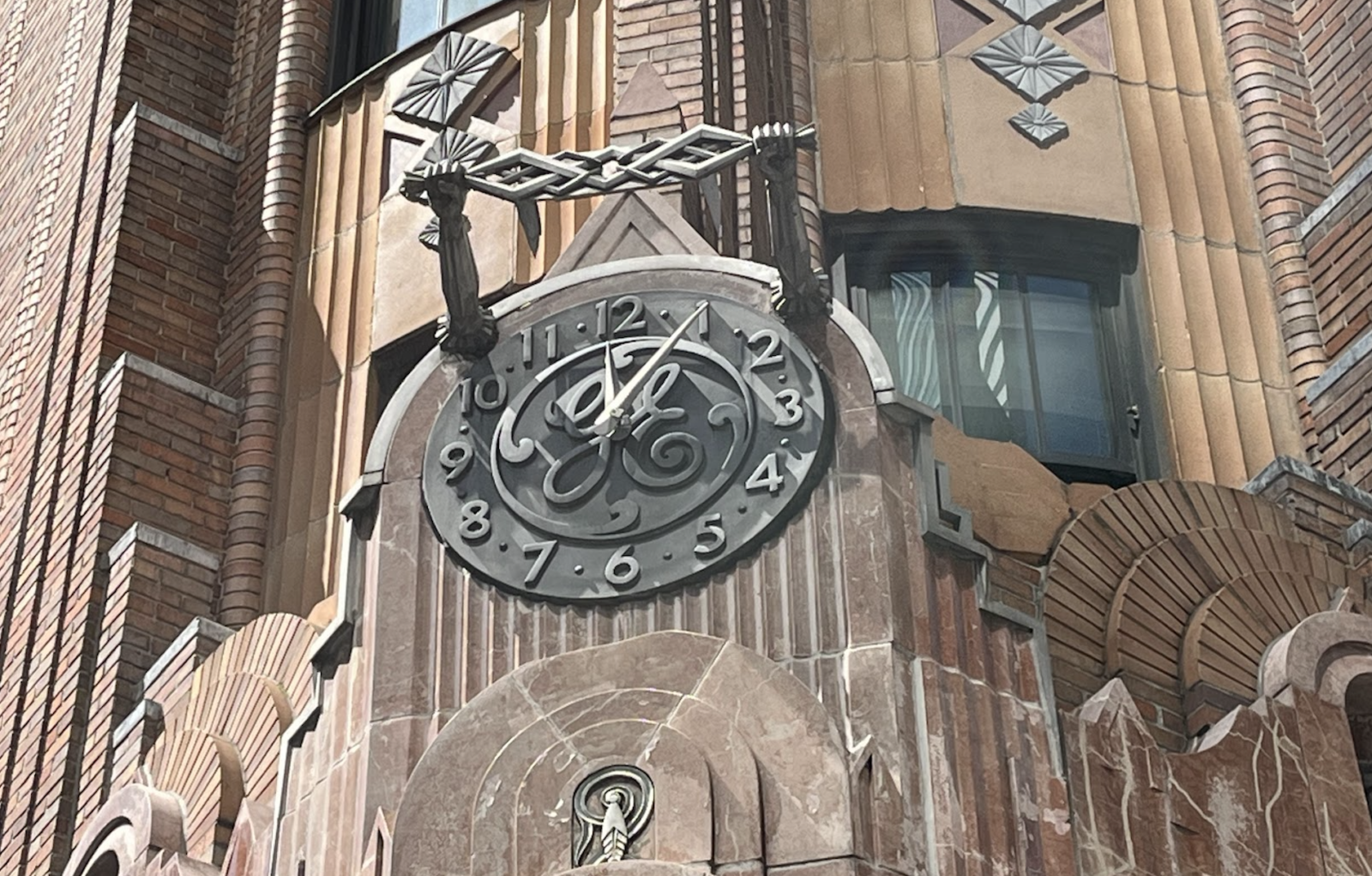Did you know Art Deco turns 100 this year? This iconic design style that emerged from Paris in the 1920s has had a massive impact on the New York skyline — the Chrysler Building and the Empire State Building just to name a couple of examples.
To see this remarkable style up close on the street and inside several lobbies, you can book our Midtown Art Deco Tour: The Golden Age of the Skyscraper with guide Jeremy Wilcox.
I recently met up with Jeremy to learn more about Art Deco design and find out how he became so fascinated with it as a tour guide.
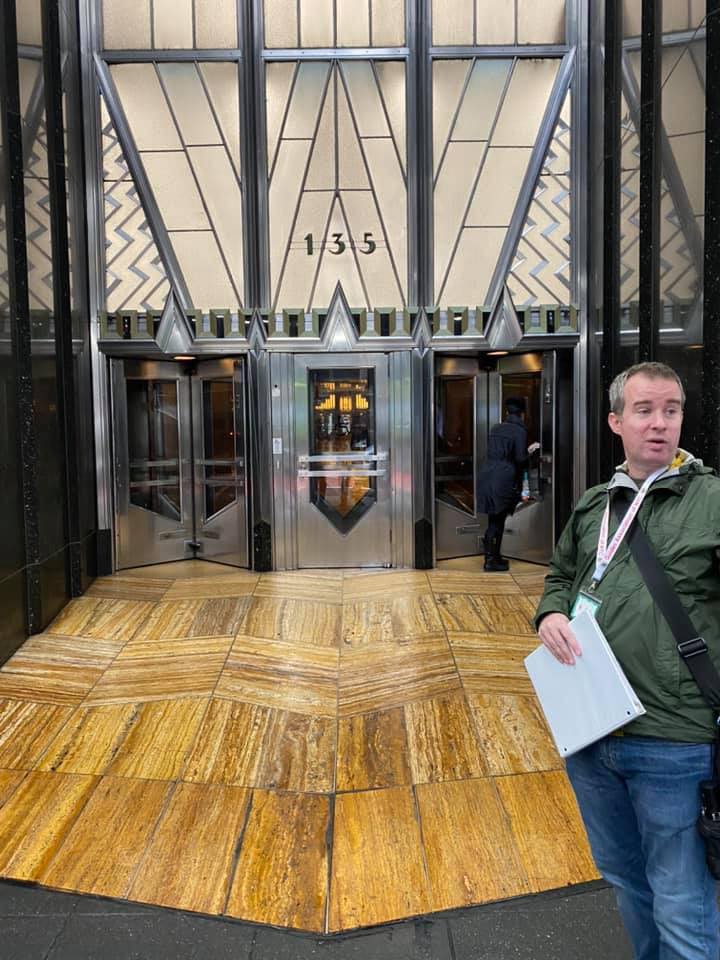
2025 marks the 100th anniversary of Art Deco. Can you give an overview of how this movement emerged in the 1920s?
Art Deco is a fascinating movement because in a way it sounds contradictory. Coming out of earlier modern styles like Art Nouveau, the idea that coalesced into “Deco” was about taking modern art and design and streamlining it: clean lines, sharp angles, geometric patterning, very industrial and sleek. And yet it is so bold, expressive, and eye-catching. So you have a “streamlined” style that is now considered the peak of bold design and architecture.
At the time, the French called it “style moderne”. But what is “modern” changes every generation, so retrospectively it got its now-famous name from the Exposition Internationale des Arts Décoratifs et Industriels Modernes, held in Paris a century ago. It was the first major global exhibition celebrating this new style and is considered by many historians to be the real birth of Deco as the dominant movement of its age.
It also perfectly captured the feeling of the “Roaring ’20s”: A modern, industrial society celebrating itself through a cohesive style that would feel timeless and forward-looking simultaneously.
[Side-note: I didn’t come up with this comparison, but an easy way to think of the difference between Nouveau and Deco is: Art Nouveau is when it looks made by elves. Art Deco is when it looks made by dwarves.]
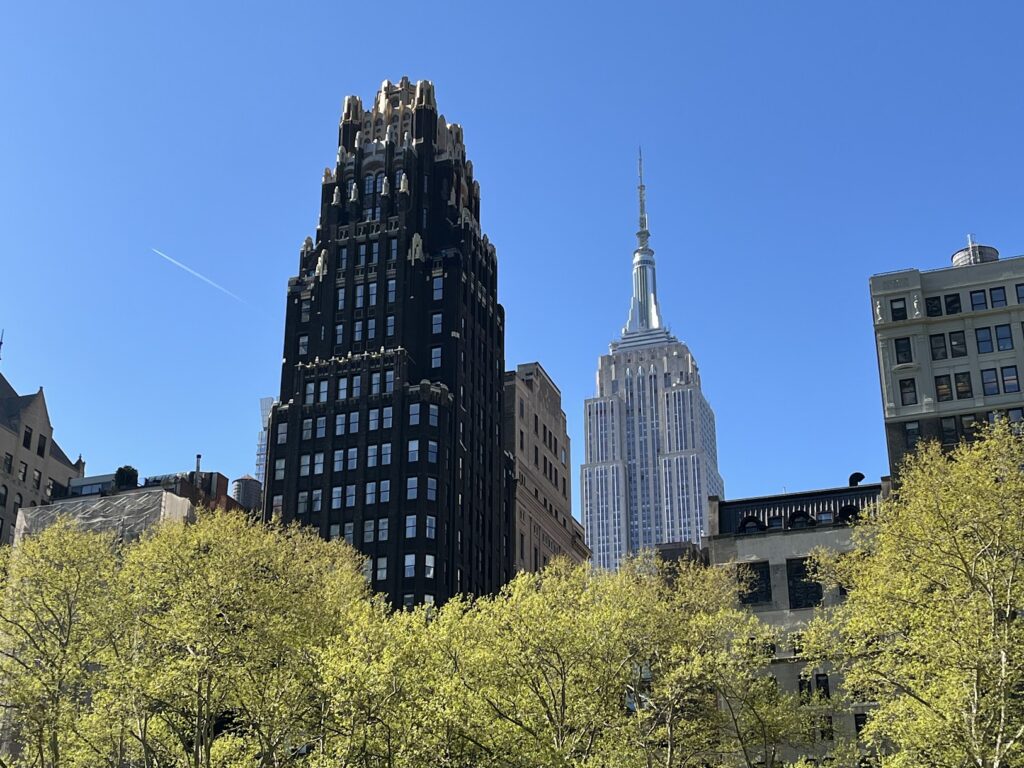
I know you are a native New Yorker but how did you become a tour guide? And what sparked your interest in Art Deco architecture?
I became a tour guide exactly 9 years ago. I love being outdoors and never really wanted a typical office job. Prior to this, I also realized that many New Yorkers take the city for granted (we’re busy!) and so began using my free time to explore the city and its landmarks, falling in love with New York really for the first time. I started dragging my friends along on my walks, and explaining what I had learned about what we were seeing. This led to the “aha!” moment of me realizing what I should do for a living.
I came into my love of architecture by walking around the city when I was younger, and at first seeing it just as a random collection of buildings. But then you start noticing similar buildings and things start to click, especially as you research them all. Architecture is how we can “read” a city. Once you learn to recognize special styles and elements, you can look at any building or neighborhood, and know the era(s) when it was developed, and what society was like at that time.
And Art Deco is the style that still defines New York. When people think of the default NYC skyscraper, they’re likely not thinking of One World Trade Center or the Central Park Tower. They’re thinking of a building from the 1920s and 1930s. That’s telling.
Your Midtown Art Deco Walking Tour is amazing. How did you come up with the route and decide which landmarks to include?
This was a hard tour to design, not because of what to include, but because of what to leave out, due to timing and logistics. I started with the understanding that the tour must include Art Deco’s crown jewel — the Chrysler Building — and designed the rest of the route around that. So I walked around thinking, “In a reasonably-paced 2.5 hours, what route makes the most logical sense, in terms of narrative and flow?”
The current version of the tour is not the original route, but it’s the one that ultimately works best in terms of maximizing the time, as well as another tour goal: Not just seeing the obvious landmarks, but some of the hidden gems.
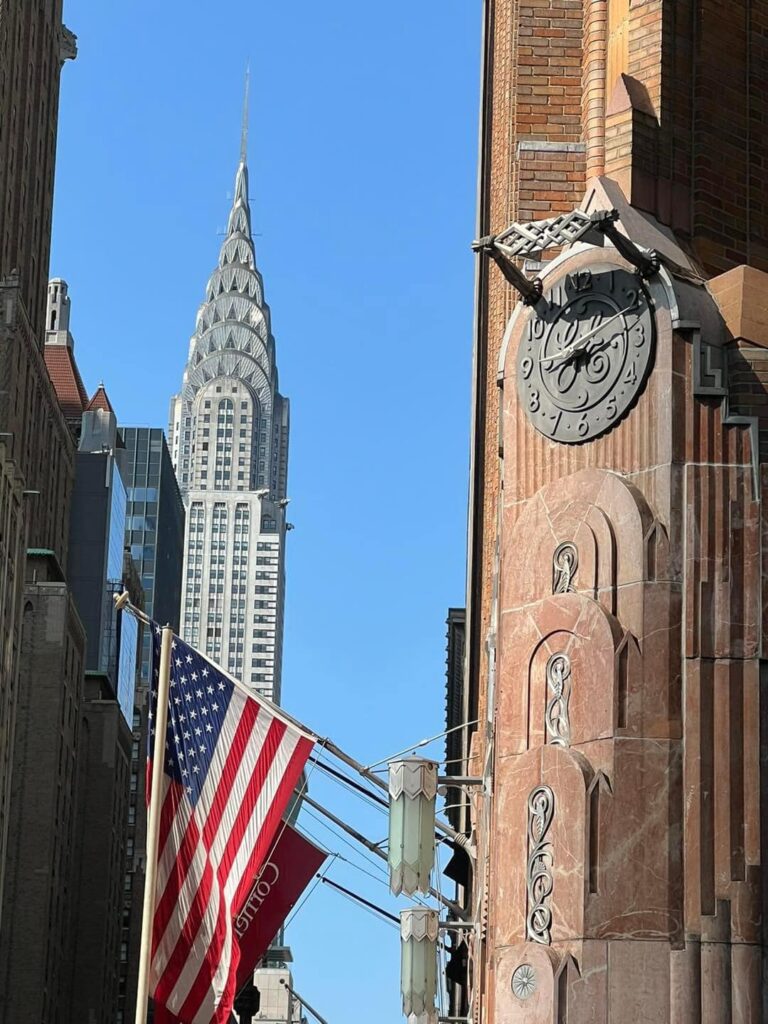
General Electric Building and the Chrysler Building. 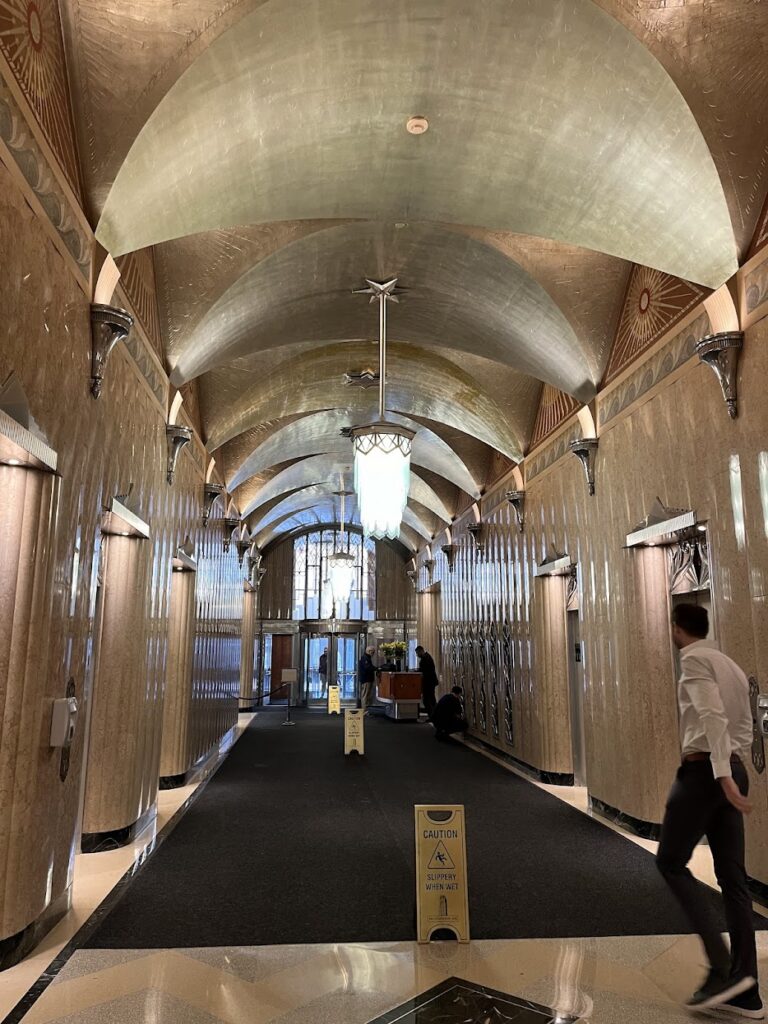
General Electric Building lobby.
One thing I love about the tour is that it goes into several lobbies that most people don’t even know exist. Was it hard to figure out how to pull that off?
Yes. These lobbies are generally accessible on weekdays during business hours, so I knew the tour couldn’t operate on weekends, which was somewhat limiting.
Once I knew what buildings I wanted to include, I went solo and visited each lobby, checking with security staff there to see if I could bring in groups, and what rules they had about that. The rules vary: group sizes, whether photos are allowed, and issues like that. These are private spaces, so I want to make sure we are respecting their wishes.
The other benefit of the lobby stops: You can escape from the inclement weather outside for a few minutes. For that reason, I also include a quick pass through Grand Central, even though it is not a Deco building. But Grand Central does show the contrast with other grand architectural styles.
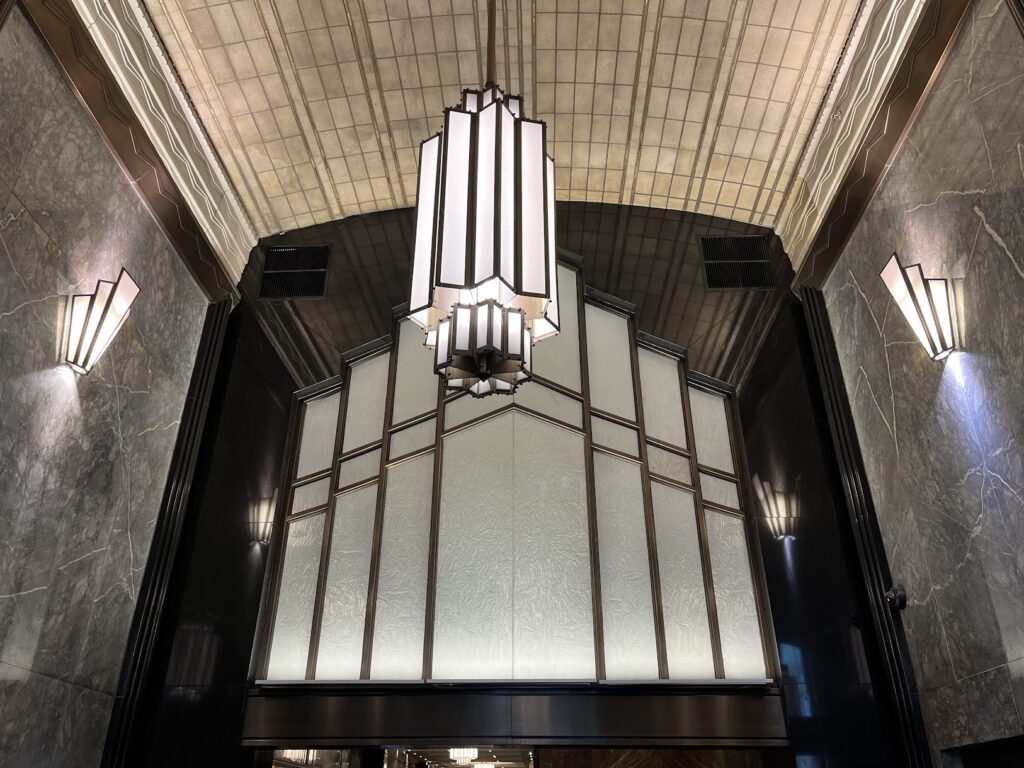
What are one or two highlights of the tour that you always look forward to?
The highlights are helping guests discover those lesser-known buildings along the route. If you can show people (sometimes even New Yorkers) an amazing Deco landmark they probably walked by many times without even noticing, that’s really great.
The Chrysler Building is also always a highlight, as there are a ton of little architectural details even many fans of the building have never noticed before. I love helping people really notice the building in full for the first time.
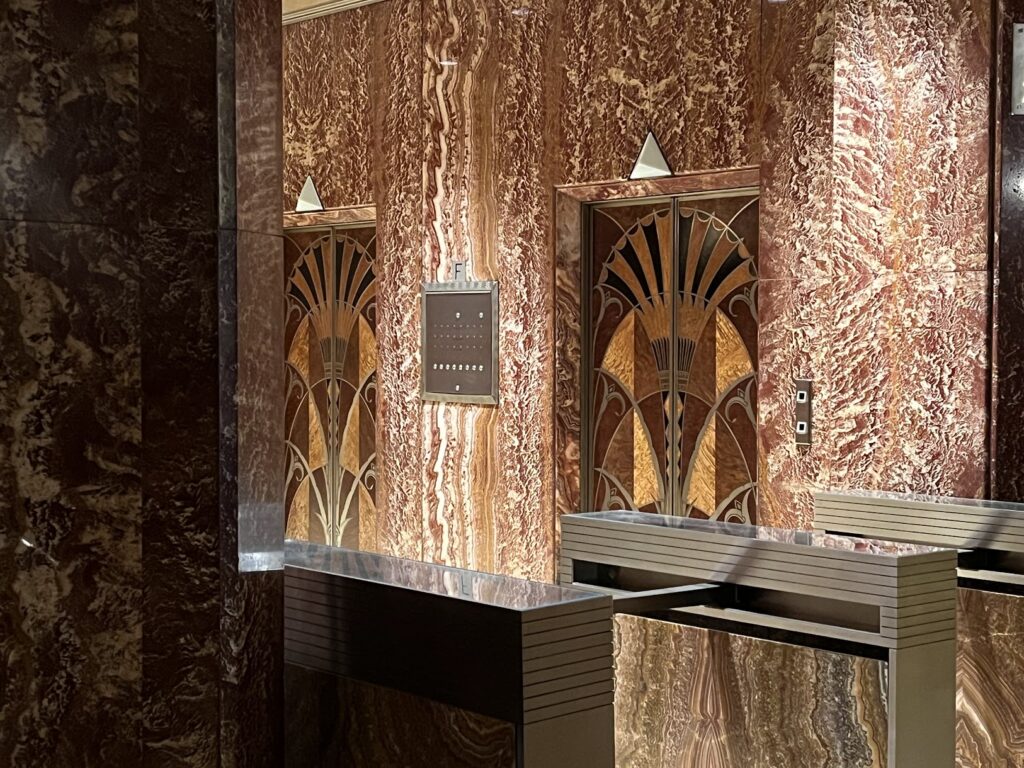
Chrylser Building elevators 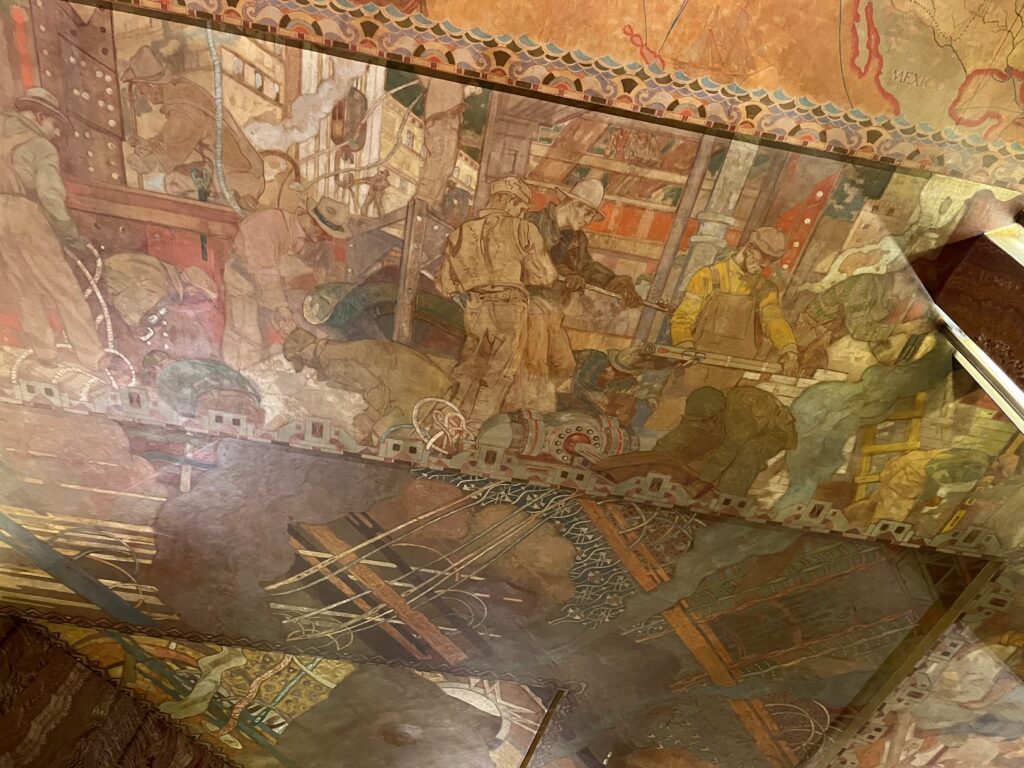
Chrysler Building lobby mural
Do you have any landmarks on your wish list to see that are not open to the public?
It’s not Art Deco, but I’m always sad that the lobby of the Woolworth Building downtown is not open to the public. It is a masterpiece.
In terms of Deco specifically, I understand the logistical reasons (it’s a working office building), but I wish the entire ground floor of the Empire State Building was accessible to visitors. Spread throughout that level, there are these beautiful medallions celebrating the technologies that made such buildings possible (electricity, masonry, heating, elevators, decoration, plumbing, excavation!). Three of them, though, can be seen in the main 5th Avenue lobby, which is usually open.
There are also a few other stunning Deco lobbies not open to the public, such as the Barclay–Vesey Building, and 60 Hudson Street (formerly the Western Union Building). Both are downtown and designed by the great architect Ralph Walker.
And too many others to name!
Do you want to see the Art Deco landmarks of Midtown up close?

